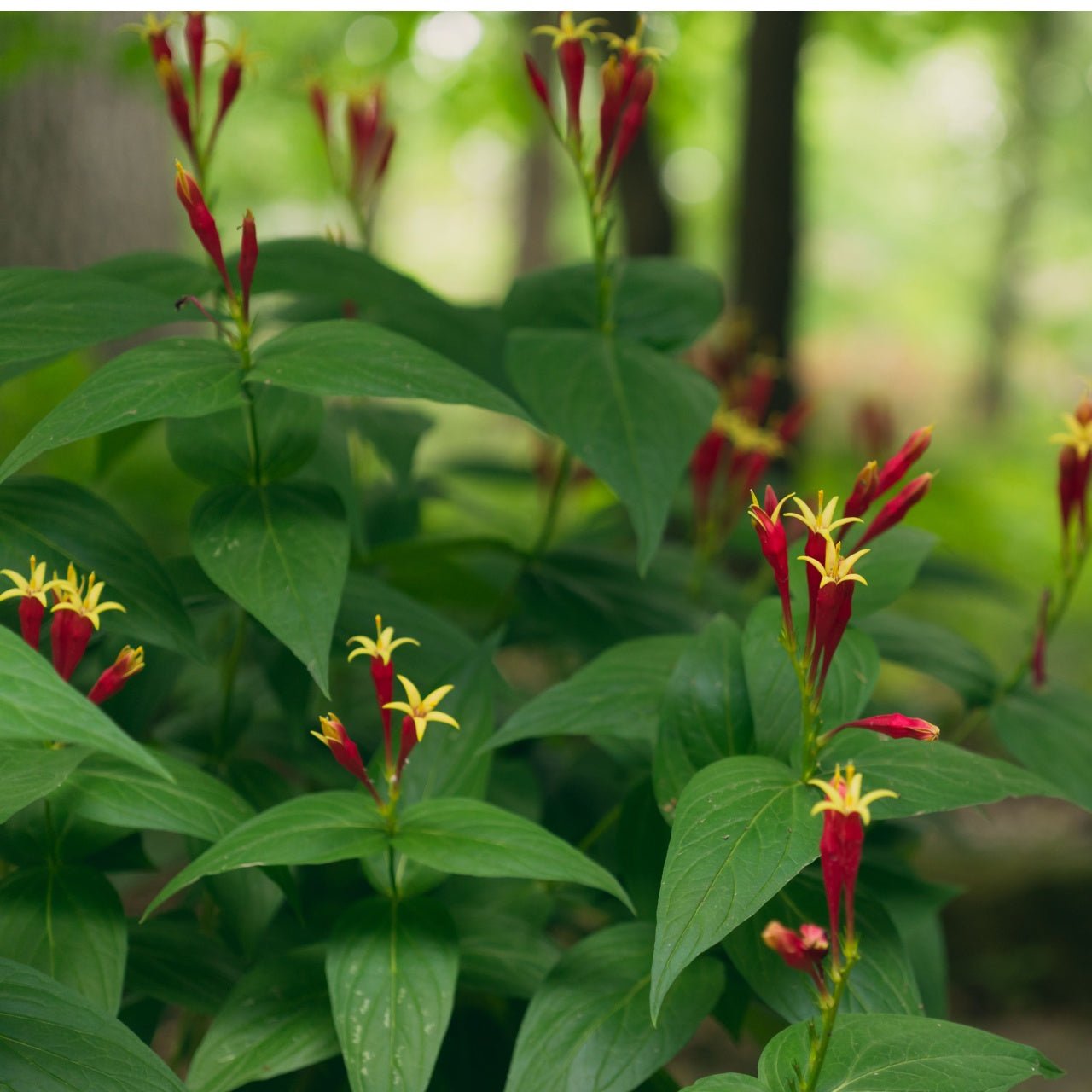

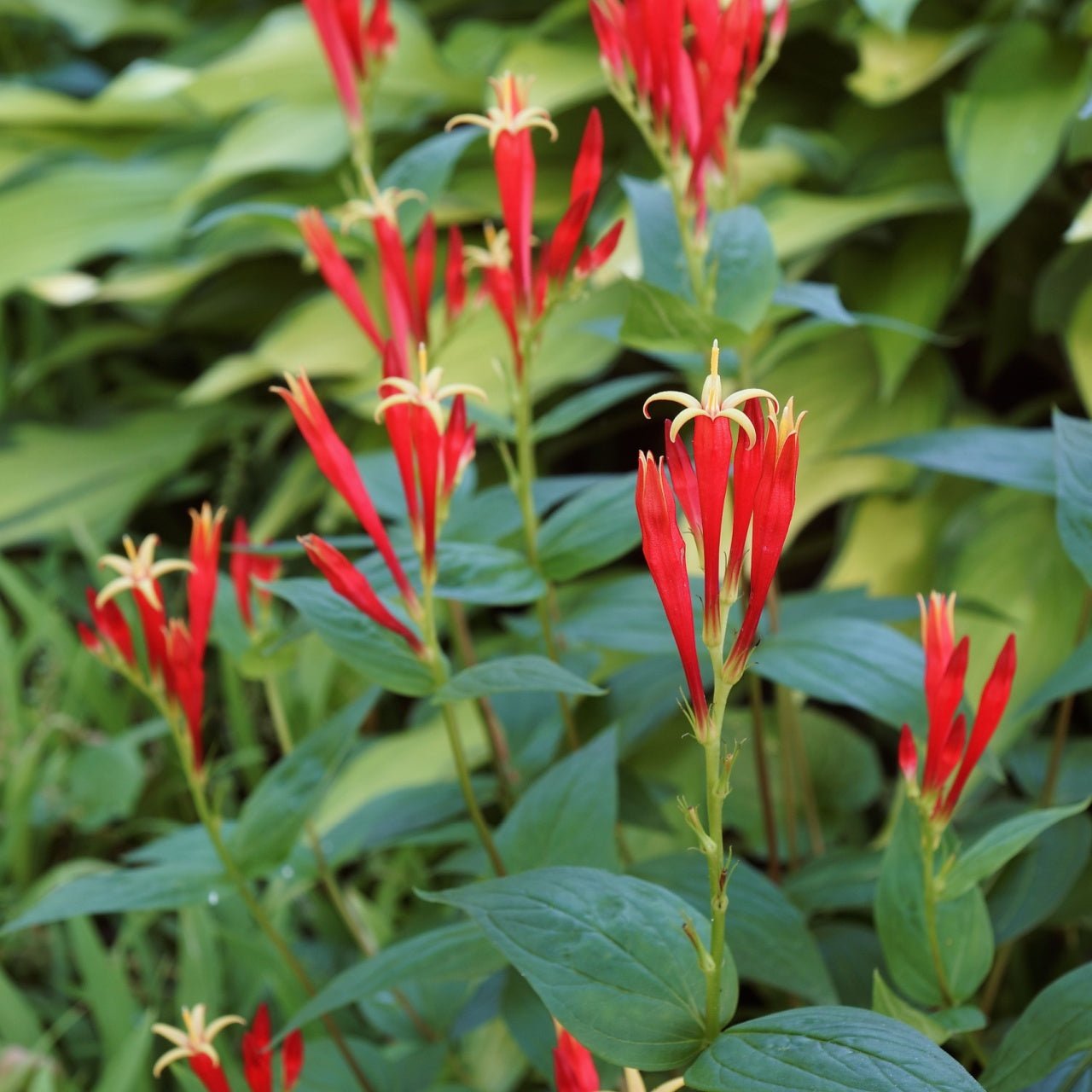
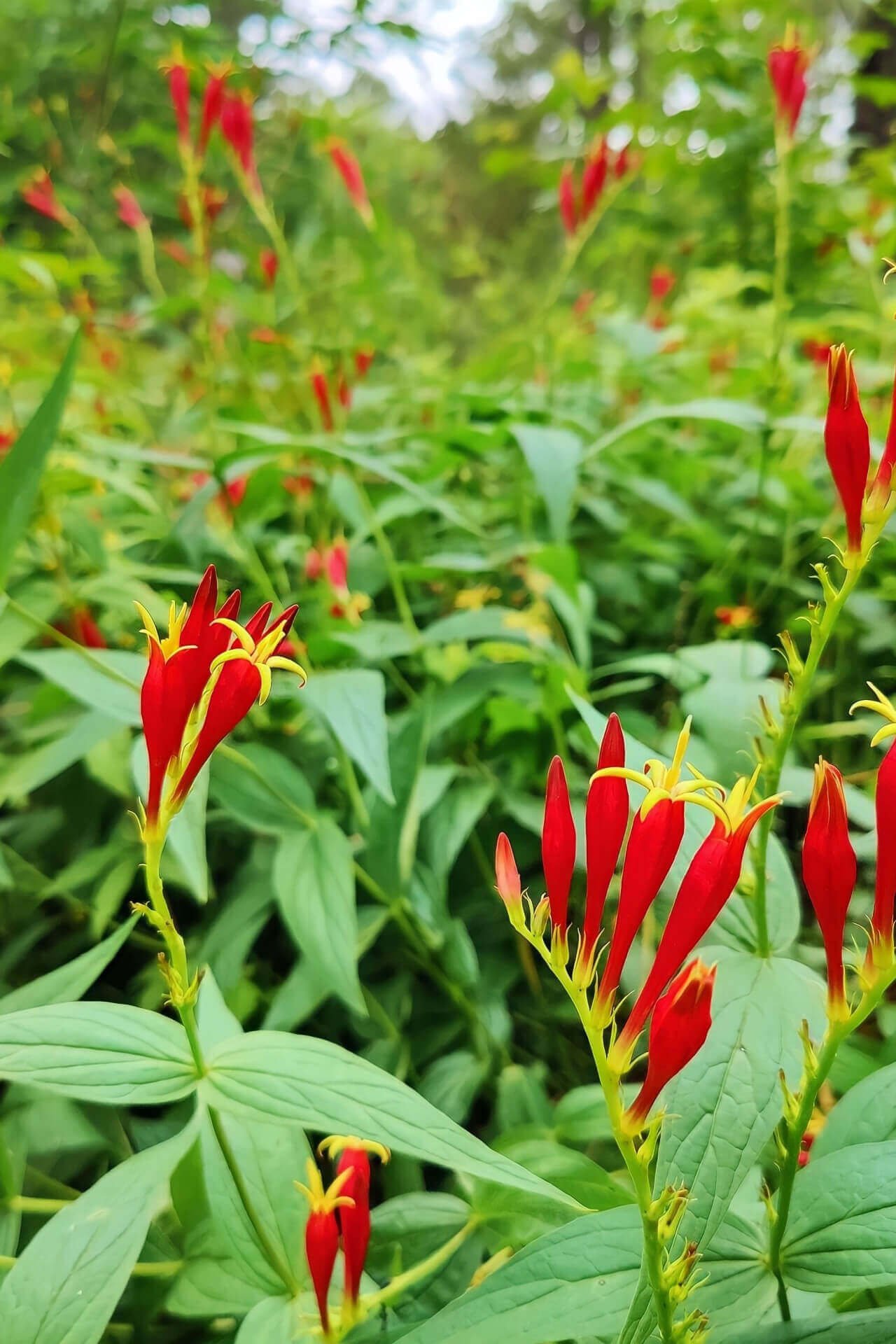

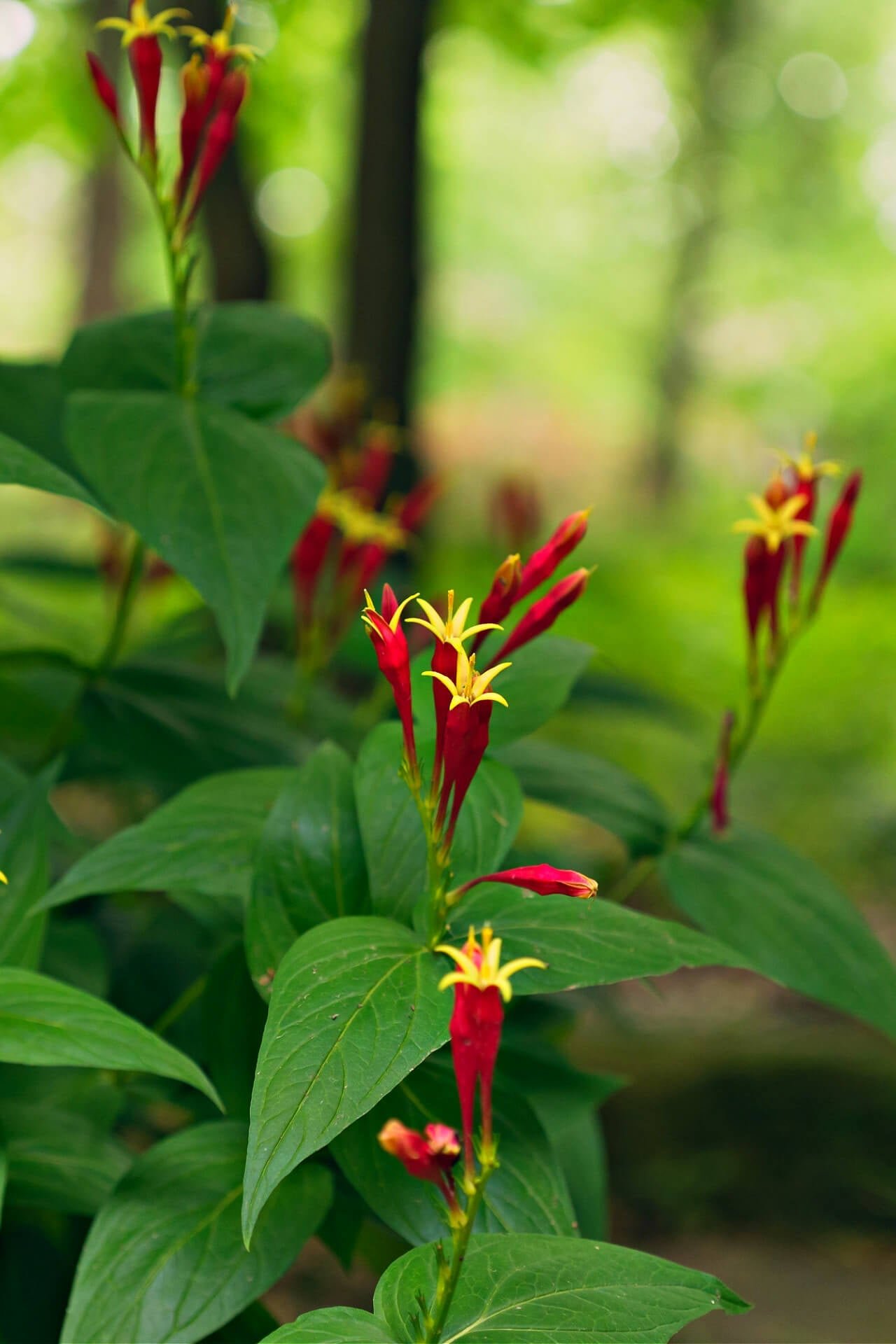
Spigelia Indian Pink
Long-lasting, colorful floral display
Low-maintenance, easy to grow
Resilient in diverse soil types
Thrives in
ZONE 5ZONE 6ZONE 7ZONE 8ZONE 9This plant ships:
7-10 Days1 Year Guarantee on all plants
Spigelia Indian Pink - Spigelia marilandica
The Spigelia Indian Pink flower is an eye-catching red flower, whose unique shape makes it immediately recognizable. It is native to southwestern and midwestern United States, but is oddly more popular in the United Kingdom and Europe. The clump-forming plant grows in a large, round shape like a bush, and while flowers can look sparse against its foliage, they are striking.
Plant Details - Spigelia Indian Pink
Family: Loganiaceae
Light Requirement: Partial shade
Water Needs: Moderate
Height: 2 ft
Spread: 8-10 in
Growth Rate: Moderate
Soil Preference: Moist, Fertile
Bloom Time: May, June, July
Flower Color: Red
Wildlife Value: Birds, Pollinators
Notable Characteristics - Spigelia Indian Pink
The foliage of the star-shaped Spigelia Indian Pink is lush and emerald green. The stems are thin and flexible, covered in layered, oblong leaves with smooth edges. The leaves get thinner and shorter as they climb the stem. The flowers start a few inches from the top of the stem. The lowest flower is the largest and they grow slowly smaller towards the tip of the stem, arranged in a perfect descending line. The red, star-shaped blooms are tubular and upfacing with a bright yellow center that is perfect for hummingbirds – the plant’s main pollinator.
Landscaping and Maintenance
In the wild, the Spigelia Indian Pink looks somewhat sparse – the blooms small against its wide leaves and thin stem. But in a garden, this plant really comes alive. It thrives in light, filtered sunlight and can flourish without the heavy overgrowth of trees in its native woodland. This plant gets its name from the alkaloid contained in its roots and foliage, spigiline. This chemical compound is poisonous to humans, but is occasionally used as a deworming agent. It is also a narcotic hallucinogenic, with death as an unpleasant side effect from improper use. Plant this beauty in your garden, but don’t bring it into the kitchen!
This Is How Your Plants Will Look upon Delivery
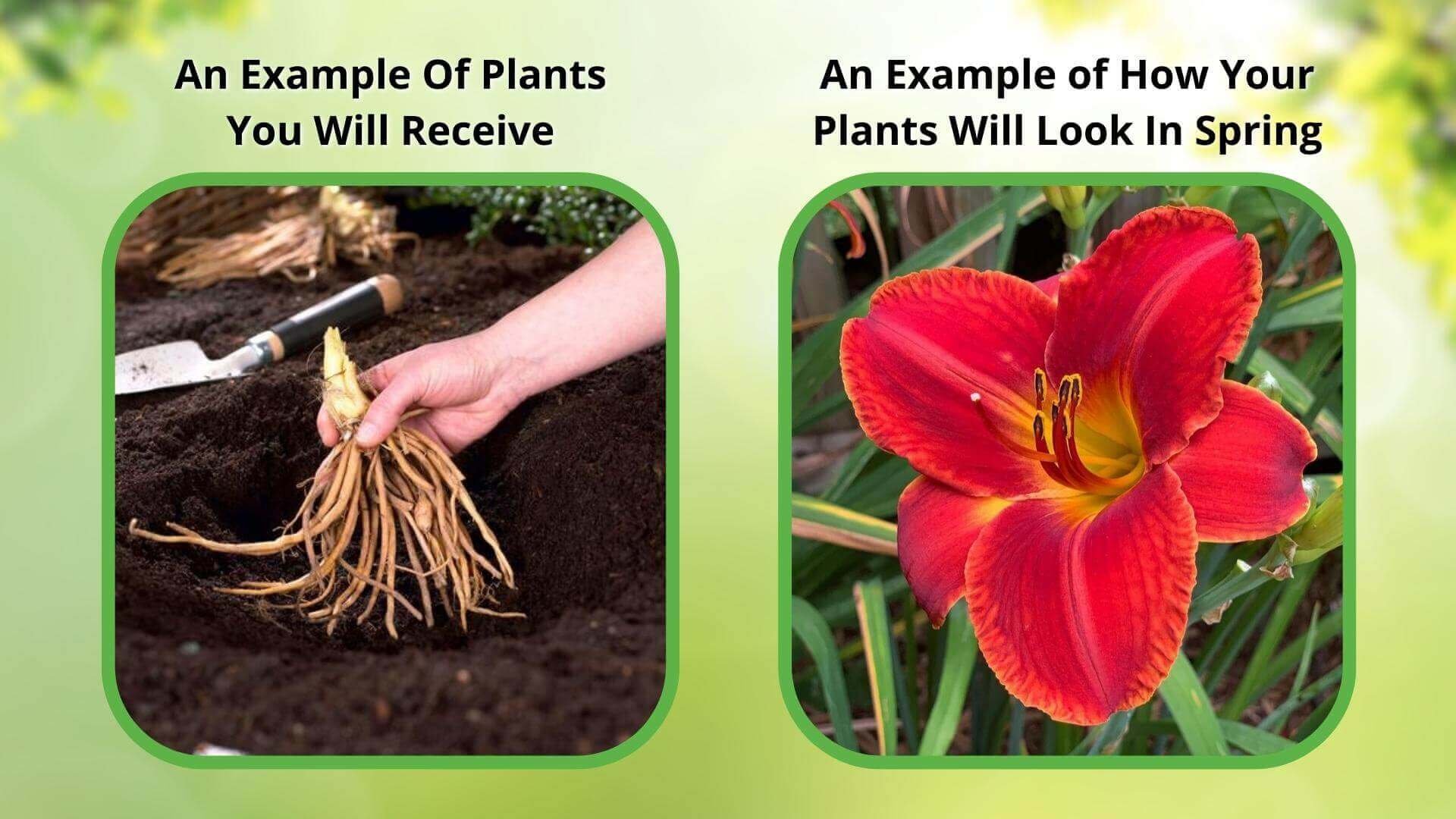
Bloom Season
Summer
Bloom/Foliage Color
Red
Height at Maturity
Over 12"
Care
Spigelia Indian Pink thrives in well-draining soil with consistent moisture. Mulch near the plant to maintain soil moisture and suppress weeds. Regularly release spent blooms to encourage prolonged flowering. For best outcomes, fertilize in early spring with a balanced fertilizer.
Plant Reproduction
Spigelia Indian Pink spreads by rhizomes, producing offsets.
Shipping date depends on the date displayed and chosen when you order from the product's page.
We only accept returns on plants verified dead. If you think your plants have died, we offer a 1 year warranty, please use this File a Claim Link to verify dead plants and start with return warranty process.







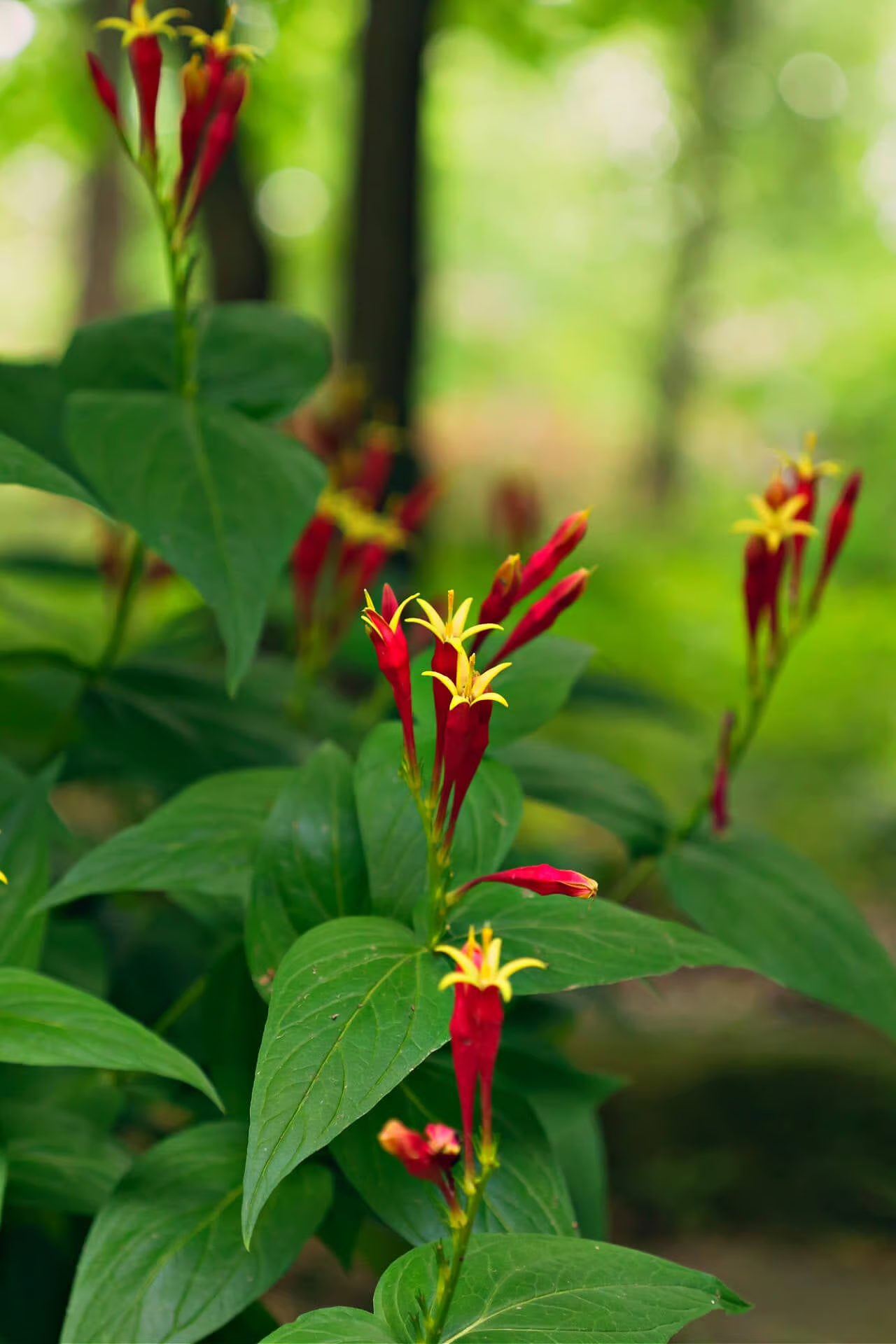
Vibrant Bloom Colors:
The Spigelia Indian Pink showcases striking red and yellow tubular flowers, adding a brilliant splash of color to any garden.
Pollinator Friendly:
This plant attracts hummingbirds and butterflies, enhancing your garden's biodiversity.
Low Maintenance:
This plant is easy to grow and requires minimal care, making it an excellent option for both novice and experienced gardeners.
Shade Tolerant:
Spigelia Indian Pink thrives in partial shade, making it a perfect choice for brightening up shaded areas of your garden.
Caring Tips
How do I care for my Spigelia Indian Pink?
Each box contains detailed care instructions and information about your product. But here's the basics.
Care Tips
Spigelia Indian Pink thrives in well-draining soil with consistent moisture. Mulch near the plant to maintain soil moisture and suppress weeds. Regularly release spent blooms to encourage prolonged flowering. For best outcomes, fertilize in early spring with a balanced fertilizer.
Light Requirements
Spigelia Indian Pink thrives best in partial to full shade. It prefers dappled light or filtered sunlight, making it ideal for woodland gardens or shaded areas where it can avoid direct, harsh sunlight that may scorch its foliage.
Hardy Planting Zones
5 • 6 • 7 • 8 • 9
Header
Use this content to share information about your store and products.
Frequently Asked Questions
How often should I water my plants?
How do I know if my plant is getting too much or too little sunlight?
What should I do to prepare my plants for winter?
What are the signs that my plant needs fertilizing?
How can I prevent pests from damaging my plants?
How do I choose the right plant for my climate zone?






